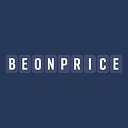Let’s be predictive: Churn rate and the startup’s plan for the future
Knowing and controlling the churn rate in a SaaS company is fundamental to be able to predict the company’s future revenues and therefore have a predictable and more attractive business for investors.
By Wences Sevillano, CFO at Beonprice
Haz clic aquí para leer la versión original de este post en español.
One of the indicators we are always on the lookout for in a SaaS company is the so-called churn rate, which refers to the percentage of customers who cancel the service, either because they no longer need it or because they migrate to a competitor.
All SaaS companies should focus on mitigating churn because higher retention allows a company to grow much faster:
· grow much faster
· reduce its cost of customer acquisition
· lower the amount of capital needed to grow the business
But there is an additional reason to focus on churn: predictability. The higher a company’s Churn, the less predictable its future performance, and vice versa.
Let’s paint a picture of a hypothetical startup that generated $2 million in revenue last year and forecasts $5 million in growth this year. That’s 150% annual growth. The graph below shows that company’s annual Carry Over Revenue as a function of its annual churn rate:
Carry Over Revenue is the fraction of this year’s revenue generated by the renewal or expansion of the current customer base. In our example:
· If the company were to achieve 0% churn, 40% of this year’s revenue would already be secured (the company would generate $5 million this year, of which $2 million would come from customer renewals).
· Conversely, suppose our company had an annual churn rate of 50%, then only 20% of revenues ($1 million) could be predicted on 1 January, half as much as in the previous case.
· And if the company were to generate a negative churn rate of -20%, where current customer accounts are not only maintained but expand over time, the churn rate grows to about 50%.
In the latter case, let’s take a look at negative churn for a moment: it is an incredibly attractive feature of a SaaS company, because it means that customer accounts are like very high-yielding deposits. More money comes in every month without too much financial effort, usually less than the new recruitment. This is a very powerful effect that drives SaaS companies to achieve high growth.
Of course, the faster a company grows, the lower its trailing revenues will be. For example, if the business were growing at 300%, at 0% churn, the trailing revenues would only represent 25% of this year’s revenues. The objective is not to maximise the trailing revenues on a relative basis. If a company achieves 100% pass-through or trailing revenues, it would mean that all of its business this year was the same as last year, so it will not grow at all (unless it has negative churn). Rather, the goal should be to minimise churn to increase the predictability of the business.
Predictable businesses are desirable businesses. If a startup can more accurately forecast how its business will evolve, the management team will be able to make better decisions about when to grow the team, increase marketing spend, raise capital, among many other decisions. The company will be one step closer to creating a predictable growth and value generation machine.
Therefore, knowing the importance of satisfying our customers as a priority, from Beonprice we put all our efforts in trying to always provide the greatest possible value, and be perceived as true technology partners. Your trust is our driving force to continue progressing day by day. Thank you for your trust!
